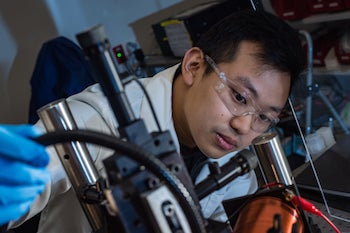Rice University lab uses magnetic beads to model microscopic proteins, polymers
An engineered string of micronwide beads may take up the slack where computer modeling fails researchers who study the bending, folding and other movements of polymers or biomolecules like actin and DNA.
Rice University chemical and biomolecular engineer Sibani Lisa Biswal and her students — lead author Steve Kuei, a graduate student, and co-author Burke Garza, an undergraduate — created strings of polystyrene beads enhanced with iron to magnetize them and with streptavidin, a natural protein that serves as a springy linker between them.

